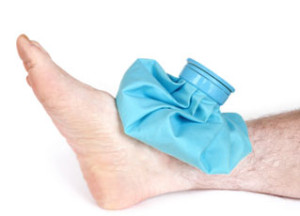Physio Health Advice > Ice vs Heat
It’s common knowledge that ice and heat are quick and easy solutions to reduce pain and help heal an injury.
However, knowing when to use the two can be confusing. Both ice and heat have pain relieving properties, which means that just using them on a painful area will mask pain temporarily. Furthermore using heat at the wrong time can actually make an injury worse.
The difference is that ice will reduce blood flow to an area and heat will increase it. This is important because in the first 48 hours after an injury the body is already supplying more blood to an injured area in an attempt to heal the damage. This is part of a process called inflammation and will make an area characteristically red, swollen, hot and painful. Sprains, strains, bruises and inflammatory conditions such as Rheumatoid arthritis will stimulate this inflammatory response.
Consequently, if you apply heat at this point, you’re increasing blood flow to an already swollen area. This is why in the first two days after an injury you should apply ice. Current guidelines suggest putting ice over the affected area for twenty minutes every hour for the first 48 hours.
Once the initial swelling has subsided, applying heat can help to increase blood flow again and encourage healing. For pain that is not related to inflammation, such as chronic injuries, general aches and pains or stiffness, heat or ice can be used. However, heat is generally preferred by most people and also has a relaxing effect on tight muscles.
It is really that simple. Avoid using heat in the first 48 hours of injury or over an area that is red, swollen and warm to touch. Remember, both heat and ice can burn (Yes, ice can burn!), so be careful to cover both properly with layers of toweling and limit sessions to twenty minutes. Also, never apply heat or ice to an area which has damaged sensation or circulation.


